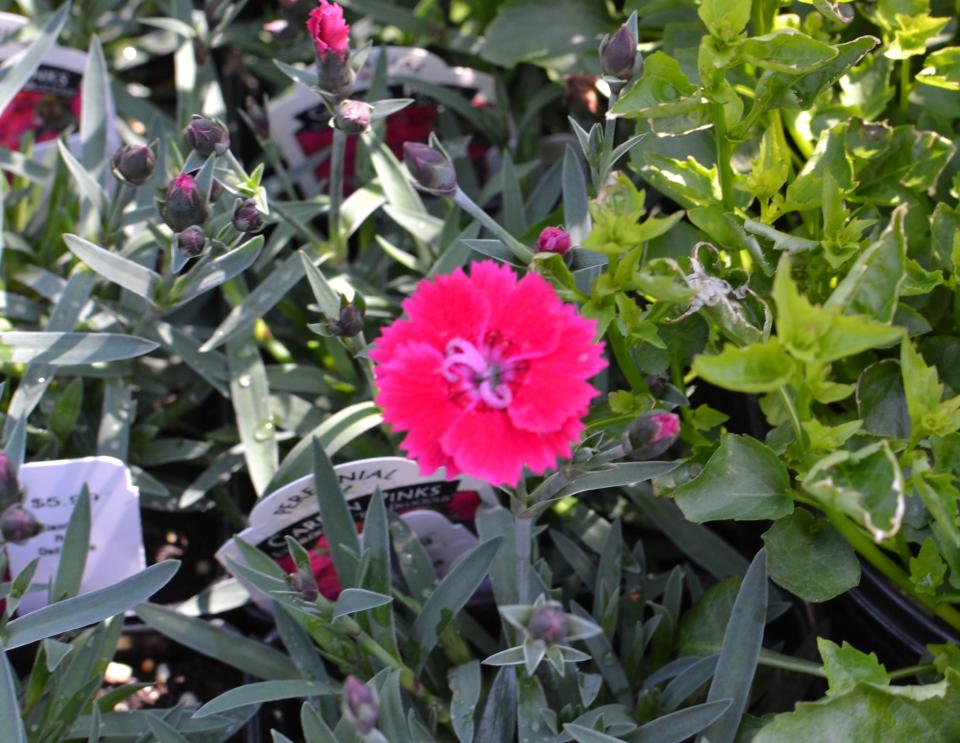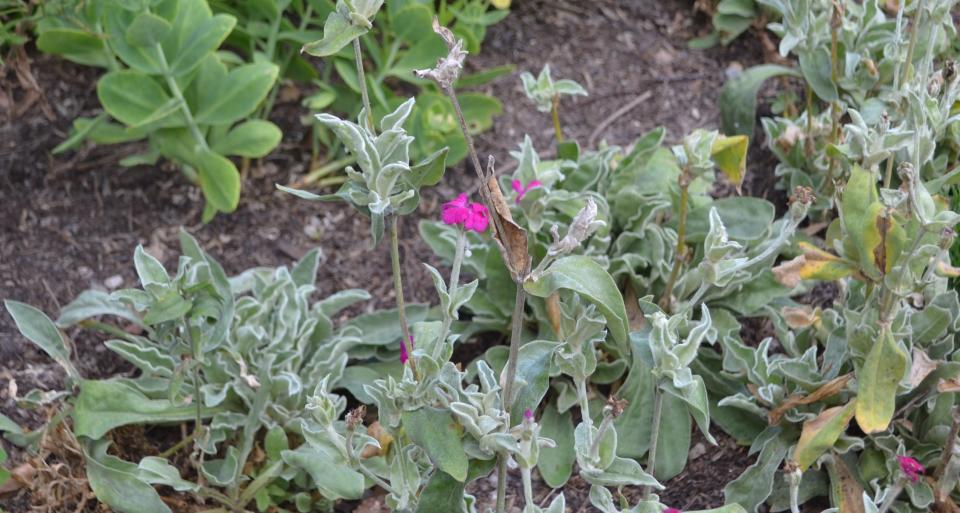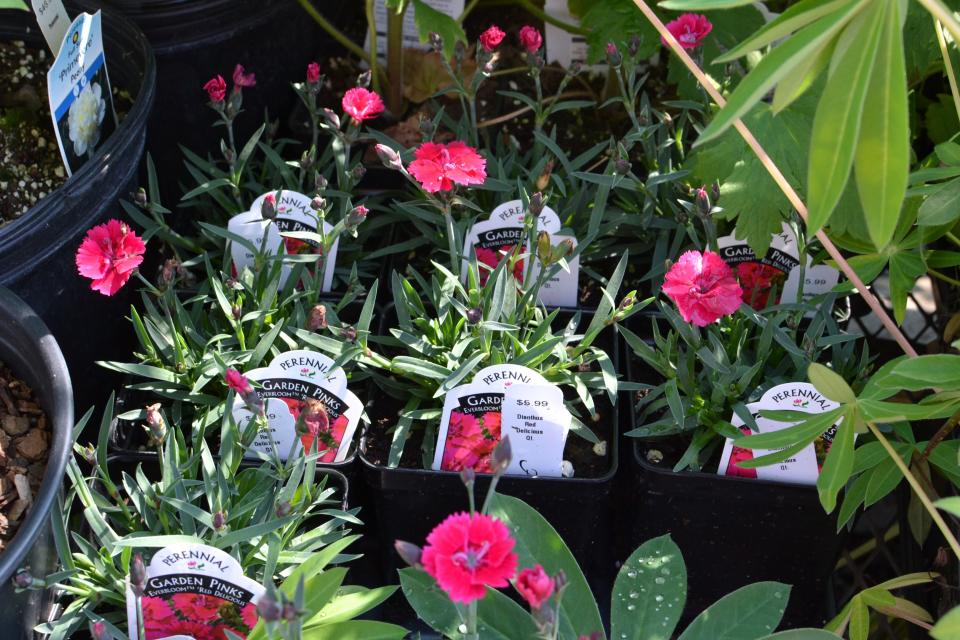A Stroll Through the Garden: Carnations growing in Ohio in the name of dianthus
This past weekend I was in church and one of my pastor friends asked me an interesting question about mini roses. One of the characteristics of carnations is some of them look a lot like roses. He asked me whether we could grow mini-roses or carnations in Ashland? There are a lot of perennials with the name of dianthus that have a carnation or mini rose appearance. The quick answer is both yes and no.
Perennials are a type of plant we think about first when planting gardens. Basically, we dig a hole and put the plant in one time only. Once the perennial is planted you can be fairly sure it will come back every year. As a gardener and landscaper, I look at perennials in two ways.
First, I like the idea that once the plant is in the ground you don’t worry about that part of the garden anymore. A problem arises if you have a different idea for that location the following year. Our lives are filled with change, and perennials will restrict creativity once have all of the beds filled with them.

Professionally, especially for gardeners, I would design annual beds into each homeowner’s landscape with flowers to enjoy − annual carnations would be among them. One other important consideration is a disease can come along and destroy your investment. Perennials can become bullies and reach a point in a garden where the plant is so forceful it takes over the bed. Choose your perennials carefully.
How to plant dianthus
When I have planted these beautiful flowers in different landscapes, I have planted them up in the border not far from the edge of the bed, mostly in a sunny position. Positioning dianthus near the front of the bed allows a gardener to deadhead the plants after their first bloom, which can help ensure a second bloom later in summer or early in the fall. If you use a subdued white-colored variety flower, then add an accent plant of red to draw attention to some feature in the garden.
Dianthus prefer cooler temperatures and require sun for good blooms. Plant dianthus in moist, well-drained soil with a sweet or slightly basic pH. You can find these grass-like, blue- or gray-tinged leaves in beds, borders, containers, rockeries and cottage gardens.

To better answer my pastor’s question, I would say the annual dianthus caryophyllus is close to a mini rose as one could get. Dianthus allwoodii and more perennial carnations look like roses. The five-petaled flowers have a variety of scents, including clove, and is most notable in the China pinks. Smaller flowers seem to be more fragrant than larger flowers.
The history and legend of dianthus
Carnations or dianthus flowers are one of the most popular flowers in the world. They are originally from Europe, Asia and Africa. Around the world there are 340 species in this family, and many varieties. I don’t quite understand why, but there is a commissioned U.S. Navy ship called the USS Dianthus. Maybe pink is scarier than you may think. Maybe you would be more familiar with the three main categories of carnations, pinks, and sweet William. Scary names, right?

One of the legends of the Catholic Church and the dianthus flower is the story of the Virgin Mary. As the legend goes, the Virgin Mary saw her Son being crucified and her tears fell to the ground and dianthus flowers grew where her tears fell. Therefore, a dianthus flower became a symbol of the Virgin Mary’s love and devotion for her son.
In Greek mythology, Zeus gave dianthus flowers to his wife Hera to symbolize his love and devotion. Chinese folklore believes dianthus flowers have the power to ward off evil spirits and bring good luck.
Dianthus is a key herb used in Oriental traditional medicine to treat urinary difficulties. In Western herbal medicine, the entire plant is used as a bitter tonic herb that stimulates the urinary and digestive system. Specifically, Dianthus chinensis is classified as an antibacterial, diuretic, emmenagogue and febrifuge. The way you can get the benefits of the plant is to make a tea with the herb.
Standard recipes are 1 pint of water and 1 ounce of the roots of a dianthus plant. You should not use an aluminum pot for this recipe. Crush the root and add to the water in the tea pot. The tea does better with a medium heat and don’t cover the top of the pot. As the water is reduced by one quarter, the tea is about ready. Cool and strain and refrigerate for no more than 72 hours. Divide the tea into reasonable doses.
Many plants are in bloom and I'm truly enjoying the flowers. Hope you have a great stroll through your garden. If you see any challenges as you go on your stroll, drop me an email at ericlarson546@yahoo.com. Thank you for your participation in our column. I will leave blogs on our column at ohiohealthyfoodcooperative.org.
Eric Larson of Jeromesville is a veteran landscaper and gardening enthusiast and a founding board member of the Ohio Chapter of Association of Professional Landscape Designers.
This article originally appeared on Mansfield News Journal: Growing dianthus or carnations in Ohio, and be careful with perennials

